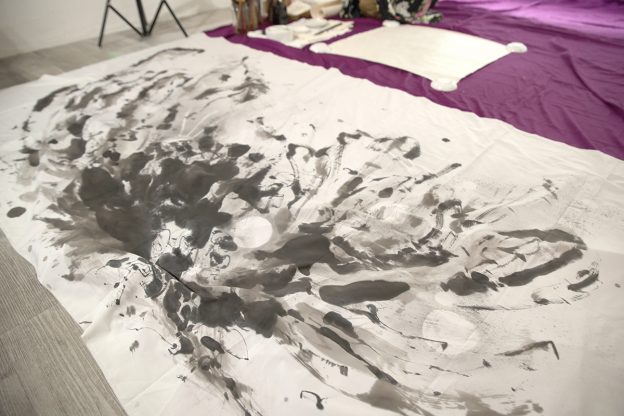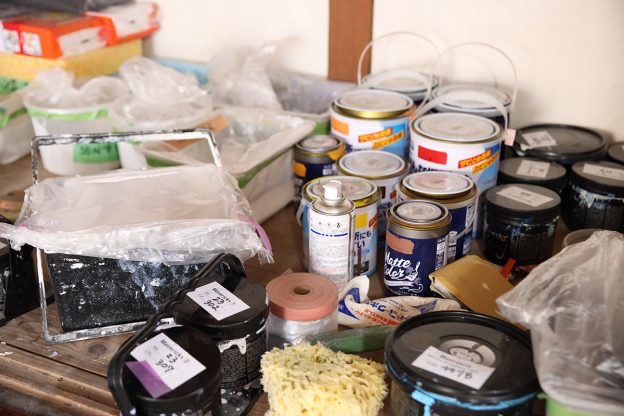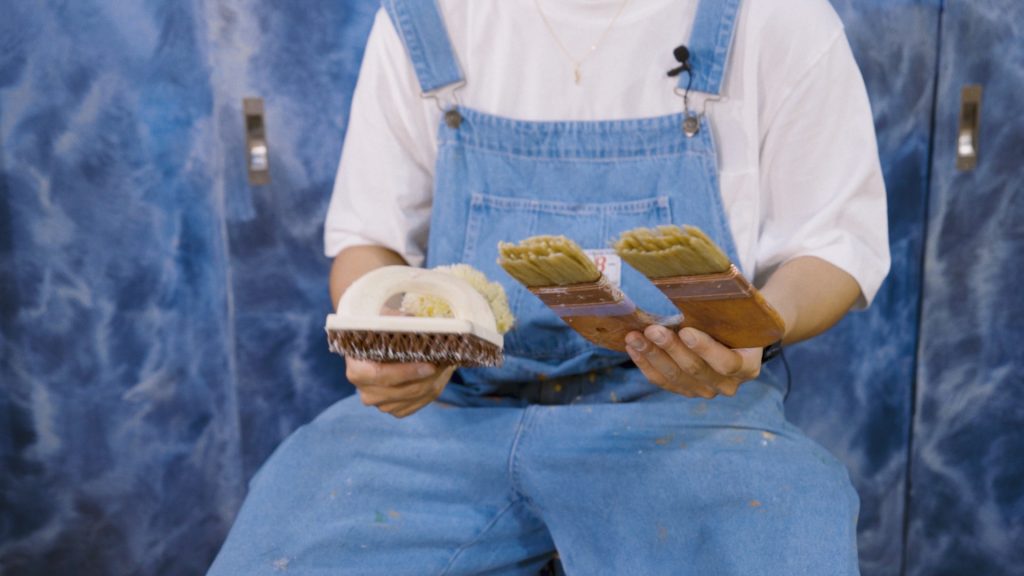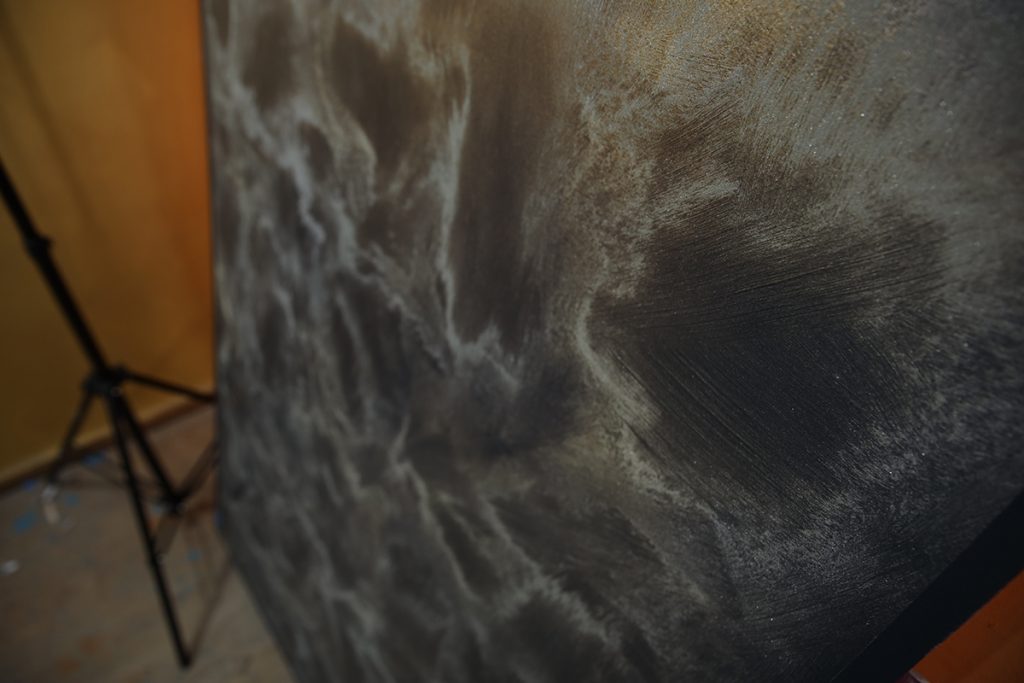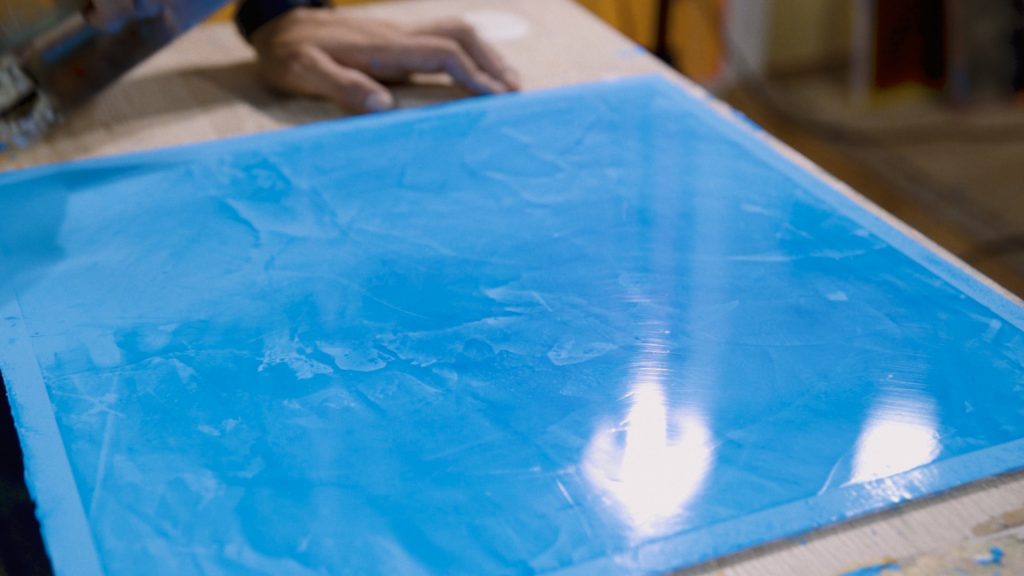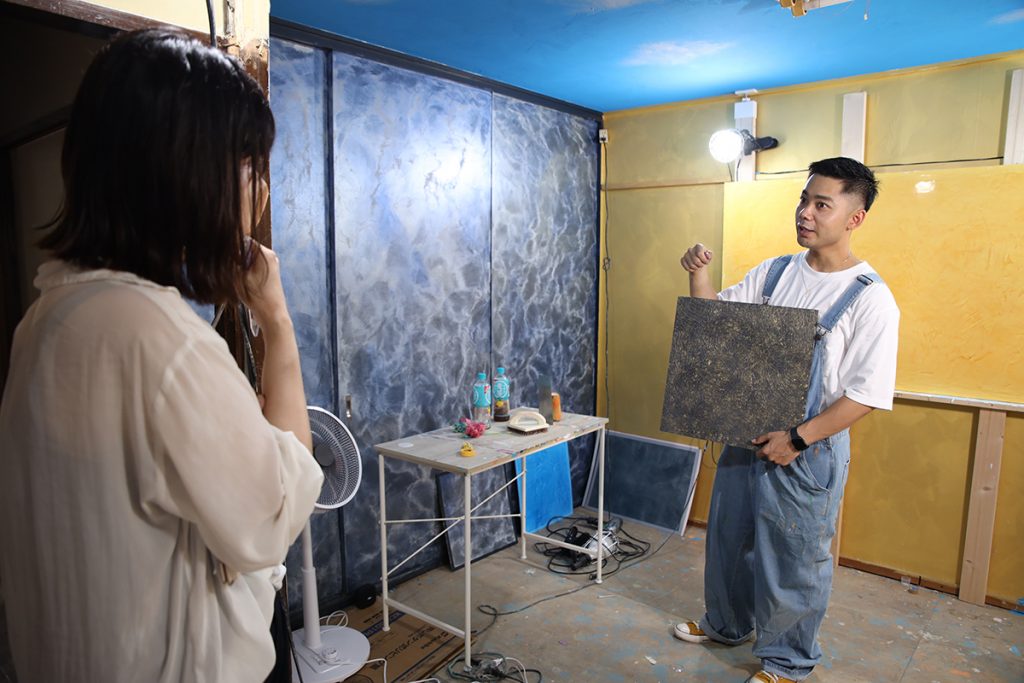What you see on paper is not a record but a state of mind
I try to draw slowly, but if I’m going too fast, just let me know.”
Although I had heard this before, I was surprised to see the white paper being dyed much faster than I had expected.
There is no sign of hesitation in the arm that holds the brush.
As I watched the artist draw with the casualness of a child in front of a blank sheet of white paper, the image I had had of ink painting melted away.
As I watched him draw with the ease of a child in front of a sheet of white paper, the image of ink painting I had had beforehand melted away. I was just going with the flow and ended up here,” Fuyo says, seemingly unconcerned.
Suiboku-ga was not something he chose to do of his own volition.
She met a master and was attracted by his personality, and through correspondence, she was invited to participate in exhibitions and found herself being presented as a member of the Suiboku-ga performance team.
The softness of his works may be a reflection of the freedom of mind that allows him to accept such a situation.
I think that if I paint as I see it, like a photograph, there is no need to paint it,” he says.
What is important to him when he paints ink paintings is energy.
I am happy. Sadness. I am tired. Oh, I want to drink beer.
Feelings that are invisible to the eye, but certainly exist.
I take home what I feel when I go running, which has become a habit of mine, and make a note of it so I don’t forget.
In my work, I express and project the places where my feelings were shaken.
I think we all have feelings that we want to express, although we express them in different ways, such as by writing them down or leaving a video of them. In my case, the most suitable expression is ink painting.
As we talked while she showed us how she painted, Fuyo’s works became more and more gorgeous as she added more and more strokes to them.
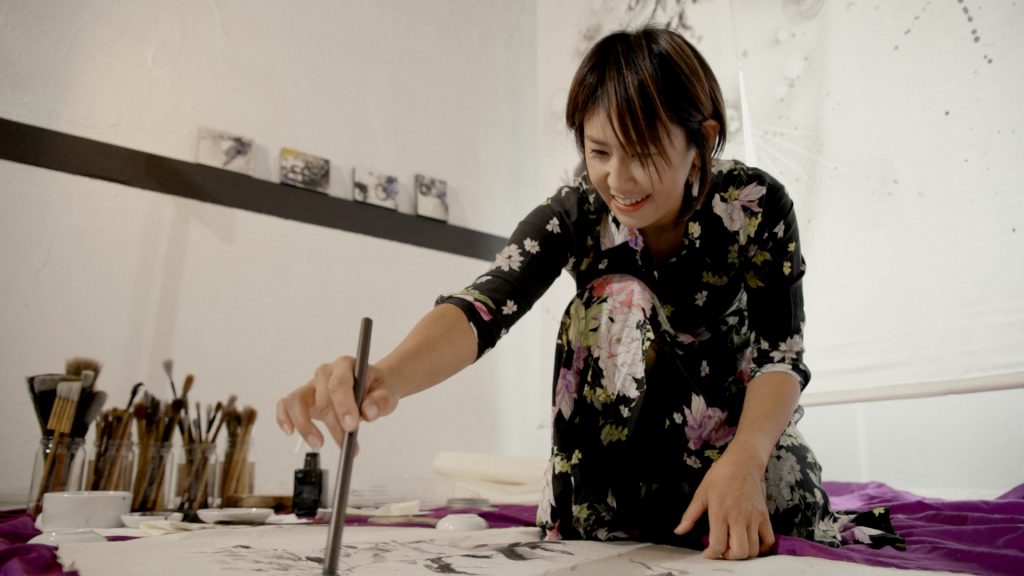
To begin with, I had never imagined that it would be okay to talk to her while she was painting a Suiboku-ga. I had been trying to keep my breath so as not to disturb him until he finished his work, since it was supposed to be a concentrated painting.
This is an empty bottle from home. You can buy these at a 100 yen store. You can start Suiboku-ga right away with what you have at home and easily available tools.
In Suiboku-ga, the choice of tools is one of the techniques. That is why he often does not reveal what kind of tools he uses. Despite being in such a world, he is easy-going, unpretentious, and free in every way.
The more I watched him create his works and listened to his stories, the more relaxed I felt.
Interview
ーPlease introduce yourself.
Yes, my name is Fuyo Nagashima. I draw mainly in sumi ink.
I had a chance to visit my current master for work, and when I met him there, I thought, “I would like to talk with him a little more,” so I started correspondence with him.
I happened to have an opportunity to visit his class, and the day I visited him was the formation day of an ink painting performance team of about five girls.
I had been invited without knowing it, and they said they were not going to do it or not, but that they were already going to do it. The girls had gathered and said, “This is what we’re going to do, everyone! These are the members!” I didn’t hear any explanation, and I said, “Oh! (Laughs)
As a result, I decided to start ink painting.
Q: Could you introduce some of the works you drew today?
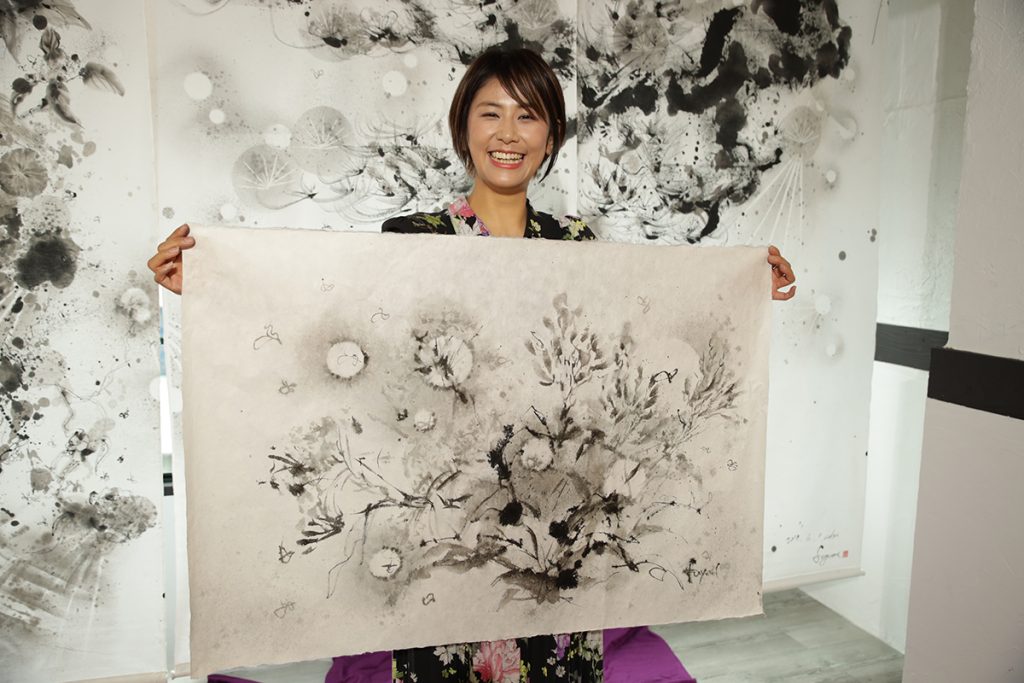
It is something that has recently become a boom for me, and I call it the “flower of karma. It is a kind of karma that connects people to each other.
I had the opportunity to paint wasabi and buckwheat flowers for a job a while ago, and from there I began to think that these two flowers were very interesting.
They are the source of inspiration for me.
Q: What do you keep in mind when you paint?
I value the life force very much.
For example, there are times when a wilting flower and a very lively flower bloom together. That is because the wilting flower is the reason this one blooms so beautifully.
I think it is the same for people. Because there are things that decline, there are things that flourish.
I try to visualize what I see and what moves me. I catch what I see and let it come out through me.
In that way, you think that you draw what you cannot convey with a photograph.
Q. What do you think is the charm of ink painting?
It is the lack of color. I think it is an art form that can be done only with black and white, water and ink.
That is why I want the viewer to change the many colors in the painting to the colors he or she sees.
The viewer can decide the colors himself, and it is not for me to decide. I will make some suggestions. But I feel that each person should have their own way of receiving the colors.
I chose black-and-white ink painting because I think it offers a great deal of freedom.
Q. Do you have any goals for the future?
I would like to broaden the scope of Suiboku-ga.
Many people have a very classical image of Suiboku-ga. Of course, classic waterfalls and landscapes are wonderful. I think it is something that should not be lost because it is a tradition.
That is why I would like to broaden the scope of my activities and make people think, “Even I might be able to do this! I would like to make an effort to make people think, “Maybe I can do it, too!
Workshops that can be done with children, or something that is not a study. For example, we could all wear white T-shirts and say, “Are you ready to get dirty? and get all dirty. Then we can play that all the dirty stuff will be turned into art clothes.
I think that would turn into a joyful experience, like, “It’s not at all difficult, but I made something so cool! It’s not at all difficult, but it’s such a cool thing! I hope that this approach will help people become more and more interested in the art.
I would like to be a gateway.
Q. Could you tell us about your other works besides abstract paintings?
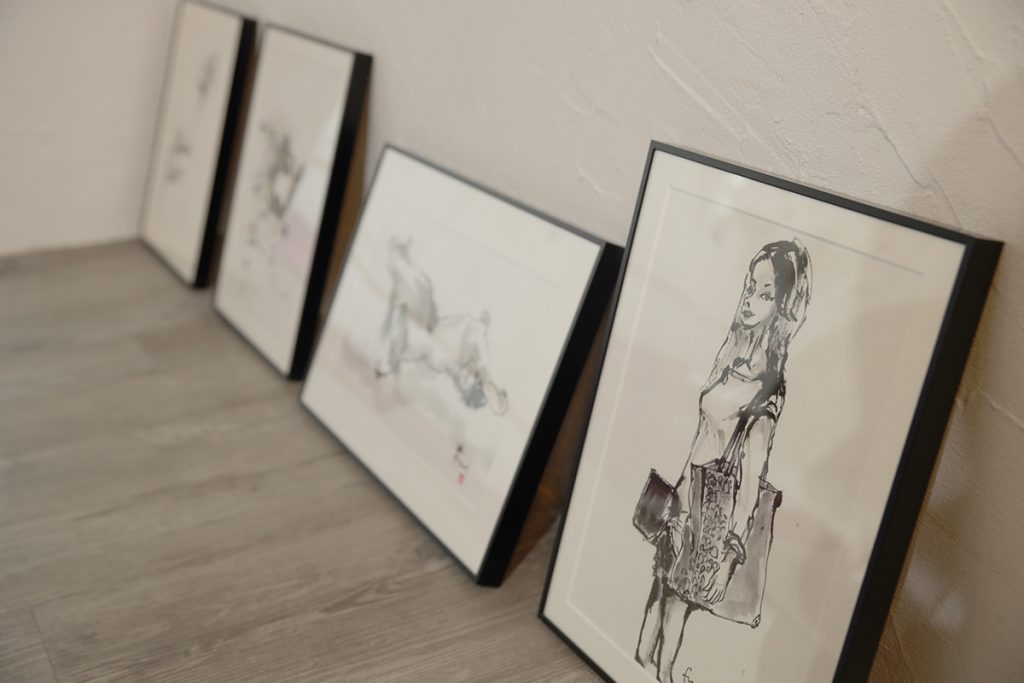
Yes, besides abstract paintings, I also paint portraits.
There might really be girls in some country, in some city. I have a series called “Trend Girls,” in which I depict stories of girls who might really exist in some country or city.
I once took a poor trip to Europe by train. I remember the cities I visited, how I wanted to meet such a girl, how wonderful she was, what I ate here, and so on.
From my own memories of the trip, I think, “I want to be this kind of person,” or I imagine, “There might be this kind of person. I draw the children that derive from that.
The pictures are connected along a story, but the full story is only available to those who have purchased the book.
Mr. Fuyo continues to create wonderful works of art, but there are many people who quit because they can’t continue with their art. What do you think keeps you going with your art?
To be honest, it costs a lot of money and takes a lot of mental strain.
If you ask me why I still do it, it is because I want to put my thoughts out there. The way I do this is through ink painting, and I think that drawing in ink makes it easier for me to put my feelings out there.
I think that is why I have been able to continue creating art for so long.
Suiboku-ga is fun!
Bringing Suiboku-ga back to a familiar existence
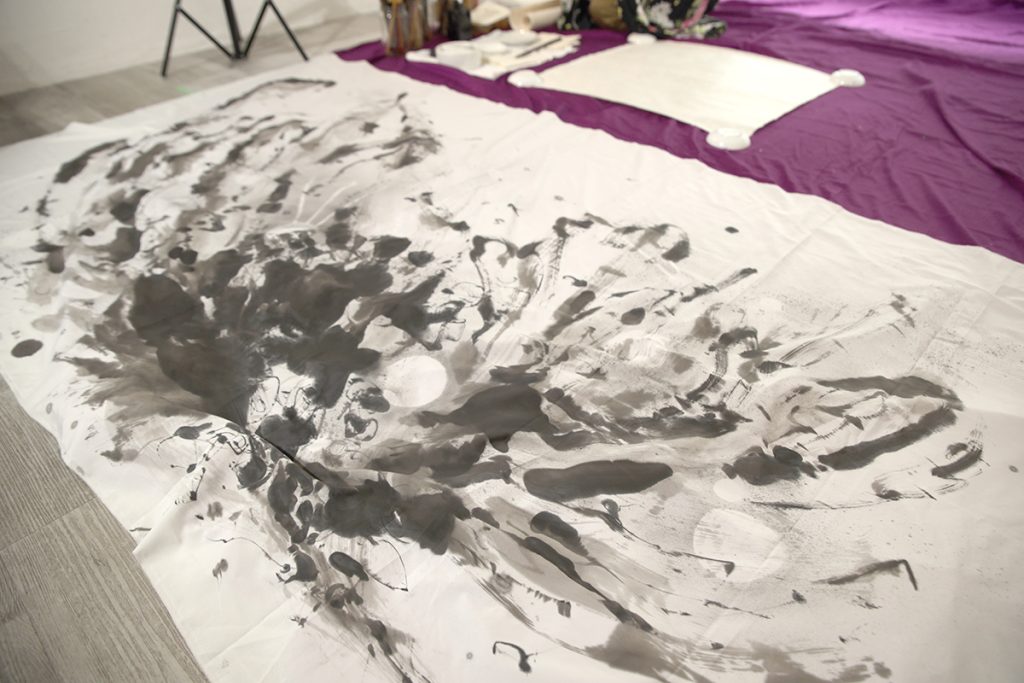
In the past, Suiboku-ga was a familiar part of daily life, just like newspaper.
Suiboku-ga can be used as an outlet for your feelings. If you draw negative things that you can’t say out loud, they won’t bother anyone,” Fuyo added.
Art allows you to choose from a myriad of colors within the limited black and white.
Knowing the freedom of this art form, I think that’s why she wants more people to know about suiboku-ga and actually experience it.
Suiboku-ga is a lofty, high hurdle, difficult and inaccessible art.
This desire to dispel the feeling that many people are too far away from it is reflected in the workshops on sumi-ink art, which do not mention the names of difficult techniques but allow people to start with familiar tools.
First of all, I want people to enjoy it. I want to be an opening for them.
If you take a look into the world of ink painting with Fuyo as a starting point, you may discover something new.
It would be interesting to see if ink paintings become something that people can easily pick up again.

